INDIAN ARMED FORCES CHIEFS ON
OUR RELENTLESS AND FOCUSED PUBLISHING EFFORTS

SP Guide Publications puts forth a well compiled articulation of issues, pursuits and accomplishments of the Indian Army, over the years

I am confident that SP Guide Publications would continue to inform, inspire and influence.

My compliments to SP Guide Publications for informative and credible reportage on contemporary aerospace issues over the past six decades.
Top 20 Modernisation Programmes
An objective assessment of the state of the Indian armed forces would reveal that its military aviation component is not adequately equipped to meet with the challenges that are looming large over the horizon
In the context of India emerging as a regional power, there is bound to be corresponding changes in the role of the Indian armed forces. As there has been a paradigm shift in the geostrategic and geoeconomic scenario on account of India’s rising status, the zone of India’s strategic interests now extend from the Middle East to the Strait of Malacca. This will consequently pose new challenges not only for the nation, but for the Indian armed forces as well. The Indian armed forces have a major responsibility towards safeguarding national security interests that now extend well beyond our national boundaries.
Alongside, there is also a growing threat from both the not so benevolent neighbours China and Pakistan and there is real possibility of a serious military threat to the nation arising from a collaboration between the two that could well push the nation into a situation of a two-front war. There is therefore imperative need for the nation to ensure that the aviation component of the Indian armed forces are well equipped with the latest military hardware to cope with any challenge that they may be confronted with. The aviation assets of the three Services will have a predominant role in any future conflict.
An objective assessment of the state of the Indian armed forces would reveal that today, its military aviation component is not adequately equipped to meet with the challenges that are looming large over the horizon. The government needs to take stock, provide the direction and the impetus needed for long-pending projects to move forward. Elaborated in the succeeding paragraphs are 20 important programmes for strengthening the military aviation component of the Indian armed forces that need to be pursued with vigour and completed in respectable time frame.
 | Medium Multi-Role Combat Aircraft (MMRCA) 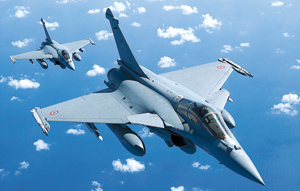 As revealed in the Parliament in the recent past, with the retirement of the older fleets of MiG-21, MiG-23 and MiG-27 aircraft, the strength of the combat fleet of the IAF has dwindled to 25 squadrons as against the currently authorised level of 39.5. There is therefore an urgent need to finalise the tender floated in 2007 for the 126 MMRCA and award the contract without further delay to the selected vendor. The Rafale was finally identified by the IAF on January 31, 2012, as the preferred platform. It has been three years since then and contract negotiations continue to drag on without any clarity on the time frame for their conclusion. |
 | Fifth-Generation Fighter Aircraft (FGFA) 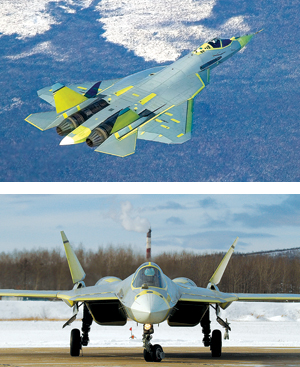 The IAF’s quest to graduate to fifth-generation technology in the domain of combat aircraft began in 2007 with a proposal to develop a fifth-generation fighter aircraft with stealth features through a joint venture between the United Aircraft Corporation of Russia and the Hindustan Aeronautics Limited (HAL). Work on the preliminary design finally commenced in 2010 after a contract between the two companies was signed that year. At the end of 2014, the partners in the project were preparing for contract for full-scale development which may take some years after the contract is signed. Given the pace at which the project has moved so far, the revised date of 2019 for certification of the aircraft and commencement of series production as was stated in the Parliament by the UPA Government, is unlikely to be achieved. China, on the other hand, is galloping far ahead of India in this regard having already flown their fifth-generation fighter the Chengdu J-20 for the first time four years ago on January 11, 2011. There is an urgent need to provide impetus to the project especially as the government has accorded approval for the combat fleet of the IAF to be enhanced to 42 squadrons to be achieved by 2022. |
 | SU-30MKI 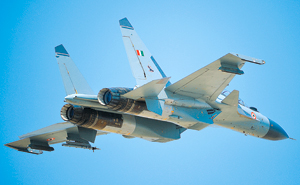 Beginning in 1996, the IAF placed orders for a total of 272 Su-30MKI in four batches, the last ordered in December 2012. HAL plans to deliver by 2019, the last of the 272 aircraft on order to equip 15 squadrons. As it appears, these aircraft of the fourth plus generation are going to be the mainstay of the IAF’s combat fleet for some time to come and hence need to be upgraded with fifthgeneration avionics and weapon systems even without stealth features that will not be possible to achieve on the existing platform. This need will become all the more urgent if there is further delay in the finalisation of the MMRCA contract or the contract cancelled altogether. In such a situation, the IAF will have to order additional Su-30MKI to sustain the operational edge over the adversaries. This message is implicit in the recent statement on the subject by the Minister of Defence Manohar Parrikar. |
 | Light Combat Aircraft (LCA ) Tejas 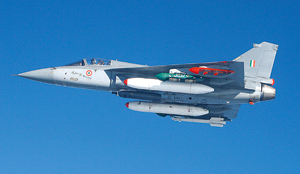 On January 17, the IAF received the first Series Production LCA Tejas Mk-I, an event that is regarded as a successful culmination of a 32-yearlong journey. However, for the IAF, this event marks the beginning of a new phase of uncertainty that is laced with dilemma. The IAF plans to acquire a maximum of 40 LCA Tejas Mk-I aircraft as it falls short of the stipulated performance parameters. The IAF is banking on the LCA Tejas Mk-II which is to be equipped with the more powerful GE-414 engine and is expected to have a much better performance. The IAF could order around 200 of these provided the new platform achieves final operational clearance (FOC) soon enough. However, as upgrade to Mk II status of the LCA Tejas will require extensive re-engineering and design work, the Indian aerospace industry may not be able to live up to the expectations of the IAF and deliver the new platform in a respectable time frame. The IAF will have to employ all the power at its command to ensure that the LCA Tejas Mk-II becomes a reality in a time frame that would enable it to make a meaningful contribution towards the modernisation of its combat fleet. |
 | Attack Helicopters 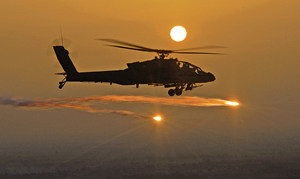 The attack helicopter fleet in the IAF consists of Russian-built Mi-25 and Mi-35 Hind helicopters. Induction of the Mi-25 began in 1984 and the Mi-35 joined in 1990. Between 25 and 30 years old and despite the fact that the fleet was upgraded a decade ago, it is ageing and needs replacement. The need to modernise and strengthen capability in this area is particularly urgent in the context of enhanced aerial activity along the borders with both China and Pakistan. The process of modernisation of the attack helicopter fleet in the IAF began with the issue in May 2008, of a request for proposal (RFP) for 22 twin-engine attack helicopters. As the tender ran aground, the RFP for 22 attack helicopters was reissued in May 2009. The IAF identified the Apache AH-64E from Boeing as the preferred platform and the case was cleared by the Defence Acquisition Council (DAC) last year. There is an urgent need to sign the contract and push for early induction of these badly needed platforms. |
 | Attack Helicopters for the Indian Army 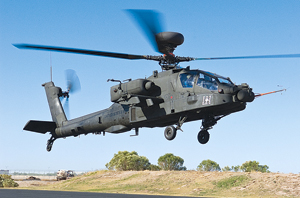 Subsequent to approval by the government for the Indian Army to have attack helicopters on their inventory, the Ministry of Defence (MoD) has mooted a proposal to procure 39 AH-64E Apache attack helicopters for the aviation wing of the Indian Army. The negotiations with Boeing are in progress. The Indian Army will get the Apache attack helicopters after the first batch of these gunships are delivered to the IAF. Expected date for delivery is 2018. This acquisition will bring about a qualitative change in the capability of the Army Aviation Corps. |
 | Light Combat Helicopters 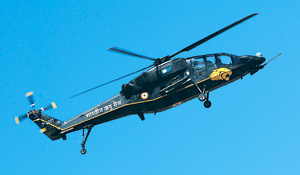 In 2006, HAL revealed plans to design and develop a multi-role light combat helicopter (LCH) for the IAF and for the aviation wing of the Indian Army. The IAF proposed to order 65 of these new machines and the Indian Army pegged the figure at 114. The prototype of the LCH undertook its maiden flight successfully on March 29, 2010, and was expected to be ready for the initial operational clearance (IOC) by December 2010 with the final operational clearance (FOC) in 2011. However, even four years after the date projected for IOC, the LCH is yet to complete its test flight programme. There is clearly the need for the MoD to drive the programme as this aircraft will be critical to effort of the IAF and the Indian Army to modernise the attack helicopter fleet and build up combat capability in the rotary-wing regime. |
 | Armed Helicopters 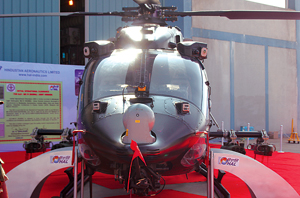 In 1998, HAL embarked on the development of a weaponised version of the advanced light helicopter (ALH) Dhruv dubbed as the Rudra ALH Mk III and Mk IV Weapon Systems Integrated (WSI), for both the IAF and the Indian Army. The contract was for the delivery of 76 platforms, 60 for the Indian Army and 16 for the IAF. The prototype undertook its maiden flight in August 2007 and received IOC from Centre for Military Airworthiness and Certification (CEMILAC) in February 2013. The first two Rudras were officially handed over to the Army during Aero India 2013 Airhhow at Yelahanka, Bengaluru. This project involving only modification of an existing platform has taken 17 years and is yet incomplete. HAL needs to ramp up rate of production to complete delivery against orders placed so far to help modernise the armed helicopter fleet of the IAF and the Indian Army. |
 | Light Utility Helicopters (LUH) 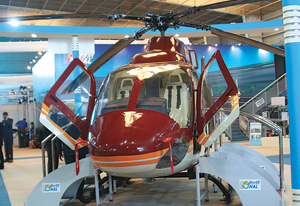 The global tender for the 197 LUH for the IAF and the Indian Army floated in 2007 was cancelled twice by the government following allegations of misdemeanour in the processing the tender. These helicopters are required urgently to replace the ageing fleet of Cheetah and Chetak helicopters that were inducted beginning in the 1970s. At the end of August last year, the tender was finally scrapped and the responsibility transferred to the Indian aerospace industry in the public sector to produce a suitable platform in collaboration with a foreign partner. The number of helicopters in this category required has been revised upwards to 384. The new platform is indeed an urgent operational necessity given that these machines serve as a lifeline to forces deployed in forward locations that are not easily accessible other means of transportation. |
 | Heavy-Lift Helicopters 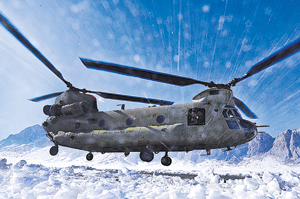 Four Mi-26 heavy-lift helicopters were procured from the then Soviet Union in the period 1986 to 1989. Of the four, only one Mi-26 remains operational. After a prolonged tendering and evaluation process, the Chinook CH-47F twin-rotor, heavy-lift helicopter from Boeing was identified by the IAF as the preferred platform. In August last year, the DAC cleared the proposal to purchase 15 of these machines. This project needs to be given high priority as the IAF currently is without real heavy-lift capability in the rotarywing segment. |
 | Russian Ofer for ‘Make in India’ 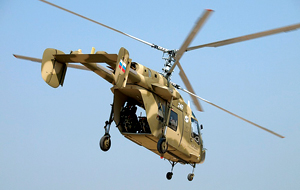 During his visit of the Russian President Vladimir Putin to India in December 2014, there has been an informal agreement between the two nations to assemble 400 twin-engine helicopters a year in India. This was confirmed by the Russian Deputy Prime Minister Dmitry Rogozin after summit talks between President Vladimir Putin and Prime Minister Narendra Modi. The plan apparently is to manufacture the Ka-226T, a light multi-role helicopter built by Russian Helicopters that can be employed in high-altitude areas of Northern India. This platform can be manufactured for both the domestic and export markets. This proposal needs to be taken up seriously as it has enormous potential for modernising the military helicopter fleet in the Indian armed forces. It also meshes with the new thrust of the government towards ‘Make in India’. |
 | Replacement of Avro Fleet 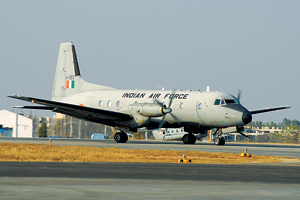 The IAF initiated a proposal nearly three years ago to replace its ageing fleet of HS-748 Avro aircraft. The proposal envisaged the involvement of the Indian aerospace industry in the private sector in this project in collaboration with a foreign partner. In response to the tender floated for 56 medium-lift transport aircraft, only one bid has been received by way of a joint bid by Tata Advanced Systems Limited (TASL) and Airbus Defence and Space. The proposal appears to have hit a roadblock as the Ministry of Defence is confronted with a single vendor situation which would be difficult if not impossible to resolve in the context of an inflexible Defence Procurement Procedure in vogue. This programme is important for balancing the transport fleet which is an important facet of its modernisation programme. |
 | Indo-Russian Project for Transport Aircraft 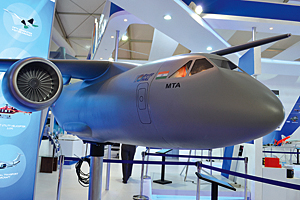 Fifteen years ago, India and Russia entered into an agreement to develop a multi-role military transport aircraft IL-214T of 15 to 20 tonnes or 82 paratroopers load capacity. The project was initiated with the aim to replace the An-32 fleet. As per initial plans, the new aircraft dubbed as multi-role transport aircraft (MTA) was expected to be ready to fly by 2005 and enter service in the IAF by 2018. It is understood that the project is still on the drawing board and is bogged down on account of some unresolved issues between the parties involved, pertaining to work share and cost. In the meantime, the An-32 fleet whose induction had begun in the mid-1980s, is approaching the end of its total technical life and would have to be retired in a decade from now. Decisive action is called for on the part of the government to impart some momentum to the project as it is vital for the modernisation of the transport fleet of the IAF. |
 | Intermediate Jet Trainer (IJT) 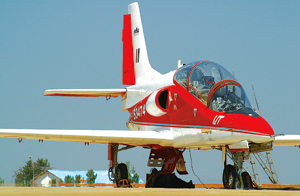 HAL began design work on an IJT in 1997 to design, develop and build a jet trainer aircraft to replace the ageing fleet of HJT-16 Kiran aircraft inducted since 1968. Dubbed as the HJT-36 Sitara, the first prototype flew on March 7, 2003. The programme since then has run into serious difficulty on account of a variety of problems, the most serious being its stall characteristics that is not acceptable for a trainer aircraft. It is understood that the programme has literally run aground as the airframe is required to be redesigned. This programme needs to be salvaged to provide the IAF with an IJT. In case the HAL is unable to do so in the required time frame, the IAF will have no option but to procure the IJT from abroad. |
 | Basic Trainer Fleet of the IAF 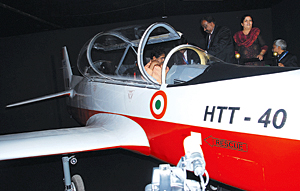 With the sudden and somewhat premature grounding of the HPT-32 fleet in July 2009, the system of pilot training fell into disarray as there was no replacement available from HAL. It was also clear that even if HAL took up the development of a contemporary design as replacement, it could well take up to two decades at the very least for the new aircraft to be available in adequate numbers to take on the task of basic stage of pilot training in the IAF. There was thus no option but to explore options from abroad and thus it was that the IAF could begin inducting the Pilatus PC-7 in less than four years from the date of grounding of the HPT-32. Since the 1950s, HAL has been providing basic trainer aircraft to the IAF and must continue doing so. The HAL has been preoccupied with indigenous development of the HTT-40, a turboprop trainer; but the project is moving at an excruciatingly tardy pace. This project is critical from the point of view of sustenance of self-reliance and modernisation efforts in this regime. |
 | Unmanned Aerial Systems 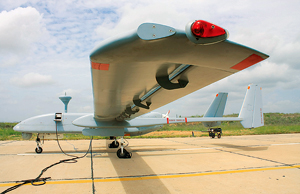 Indications are that unmanned aerial systems (UAS) are going to play a major role not only in aerial warfare but all other roles to support the military. Roles pertaining to aerial warfare envisaged are aerial reconnaissance, surveillance, electronic warfare, strike and aerial combat. In the support roles, UAS will be used for logistic support and aerial refuelling. The US now trains more UAS operators than aircrew which should be an indication of things to come. The Indian armed forces have so far taken only baby steps in this field. Induction of UAS therefore ought to be an integral part of any real modernisation drive by the Indian armed forces. |
 | Naval Version of Tejas Mk-I 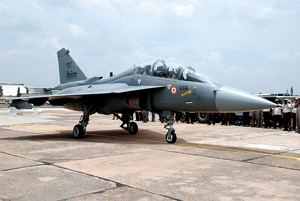 Following the IAF, the Indian Navy too opted to order its own naval version of the LCA Tejas Mk-I and placed orders for eight aircraft. The refurbished INS Vikramaditya has already arrived but the Tejas Navy is not yet ready for deployment. Besides, the indigenous carrier is also under construction. So far the Indian Navy has been dependant on Russia for the MiG-29K, 45 of which have been acquired so far. The Indian Navy will certainly need more of carrierbased combat aircraft if it has to cease dependence on foreign sources in its pursuit of selfreliance. The Indian Navy plans to order 46 of the Naval version of the Tejas Mk-II as well. The good news is that the first deck landing trials of the Tejas Navy have been completed successfully in December. |
 | Naval Multi-Role Helicopters 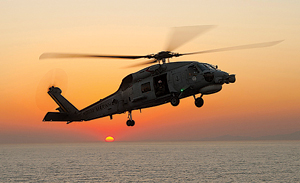 The MoD floated a global tender in September 2008 for 16 advanced multi-role naval helicopters with long-term projection for 60 such platforms. For several years since then the issue remained dormant with the Indian Navy’s rotary fleet declining further in strength and capability. With India emerging as a regional power, responsibility of the Indian Navy has also grown significantly. The helicopter fleet of the Indian Navy is small and ageing and hence needs to be revamped urgently. After years of effort, finally Sikorsky has won a contract for 16 S-70B Seahawk naval multi-role helicopters with an option for another eight. There are, however, a number of issue to be negotiated and resolved before these machines are delivered to the Indian Navy. The project needs to be put on fast track to enable the Indian Navy to modernise its rotary-wing fleet. |
 | Naval Utility Helicopter 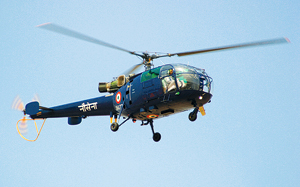 The naval utility helicopter programme involves machines with a maximum take-off weight of 4.5 tonnes, as a replacement for existing HAL Cheetah and Chetak helicopter fleets. A request for proposal (RFP) was issued by the MoD in 2012 for 56 helicopters in this class with an option for 28 with entry into service expected in 2016. However, in 2014, the tender was cancelled by the MoD. The revised plan calls for full manufacturing in India. It is unlikely that the Indian Navy can get these machines in the originally stipulated time frame. There is an urgent need to get the alternative plan moving as the Cheetah and Chetak fleets will have to be phased out in not too distant a future. |
 | Indian Multi-Role Helicopter (IMRH) 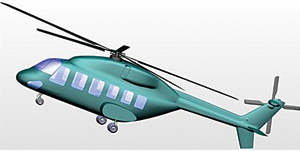 A programme at HAL to build an indigenous 12-tonne class helicopter in collaboration with a foreign partner for the Indian Navy has been on the cards since 2009. Dubbed as the Indian multi-role helicopter (IMRH), the market for this platform was estimated to be around 300 to 350 in all. HAL was looking for a partner but apparently there has been little or no progress on this programme. There is a need to revive this plan. |
Conclusion
It should be evident from the narrative above that the modernisation plan of the aviation wings of the Indian armed forces has been lagging behind primarily on account of delay in procurement of fixed-wing aircraft and helicopters attributable to the complex Defence Procurement Procedure. The problem has been compounded by near paralysis in decision making especially in the last decade, allegations of misdemeanour in processing of tenders, blacklisting of global aerospace and defence majors, cancellation of contracts and bureaucratic impediments. But above all, the major drawback is that the ambitions of the Indian armed forces are not supported by an effective indigenous capability in defence production, a weakness that needs to be addressed by the government on highest priority.





